Industrial_Wiring_Tips_and_Tricks.pdf
The things we are going to be talking about today can apply to all wiring situations, but for the purpose of today’s video, we will be focusing on how we wire a control panel.
Use the right kind of wire MTW, THHN, XHHW
- MTW is most commonly found in control panels. It is more flexible which makes it ideal for maneuvering within the wire ducting or a control panel.
- THHN is the most commonly used is homes and commercial building. It is more rigid, which makes it better for feeding through conduit, can be found as either stranded or solid wire.
According to UL standards: Green should always be used for ground. Black should always be used for AC Hot, and White for AC Neutral. There are several other requirements for signal wiring colors as well.
- It is important that we know the voltages and potential current that can be running through our wire. Knowing these things, especially current, can help us determine what size of wire we need to use. A simple rule of thumb, the higher the current, the larger the wire we will need.
- Allow enough room for wire to bend - Don’t over bend
- Always try to give yourself a little extra space
- In the event that we need to make a change in the future it is always nice when we have extra wire in the panel that is available for any changes that may need to occur.
- When wiring in the field, it is a best practice to leave some wire coiled up in the bottom of the enclosure before we make the run and terminate.
Proper torque
- Not enough torque can lead to connection problems
- Or can cause the wire to come lose over time of if it is disturbed in anyway.
- Too much torque, can damage the terminal block and the wire and should be avoided.
Don’t Birdcage and allow wires to fray at terminations points
- Demonstrate bird caging
- Can lead to a short in the circuit
- How can we avoid bird caging?
Label, Label, Label
- Labeling is very important when doing any kind or wiring.
- Proper labeling will allow others to easily identify the function of a wire, and where it is going.
- It can make troubleshooting later on much easier to anyone who might be working in the panel at a later date.
- Not all colors are created equal
- Important to look at local codes and customer requirements.
- NEC and UL standards are good points of reference when trying to select wire color. For example:
Transcript:
[0m:4s] Hi I'm Josh Bloom, welcome to another video in the RSP Supply education series. Today we're going to be talking about electrical wiring, best practices, the things we should do, and the things we shouldn't do. Keep in mind that the wiring practices we talk about today can be applied to all wiring situations, but for today's video we're going to specifically be focusing on wiring an electrical control panel. One of the first things we want to consider when wiring is what type of wire should we actually use? Today we're going to be talking about three very common types of wire and then what applications we use each of those types of wire.
[0m:37s] In an industrial control panel like we have here, we typically use MTW. MTW is a much more flexible wire which allows it to easily maneuver through the wire ducting in the control panel. THHN wire is the most common type of wire we might see in our homes or in a commercial building. It is a much more rigid type of wire which makes it easier to pull through conduit. It can be found in both stranded and solid wire. XHHW wire is very similar to THHN in its rigidity but offers more protection in its insulation and has higher operating temperatures and voltages. The next thing we want to look at with our wire is the color of wire that we are using. Not all colors are created equal, and we don't want to just arbitrarily use any color of wire to wire up any kind of electrical instrument, or our homes, or an industrial control panel. It is important to note when selecting wire color that we look at local codes and our client or customer requirements. The NEC, or National electrical code, or UL are great points of reference when trying to decide what colors of wire we should use. For example UL standard state that a ground wire should always be green. It also states that an AC hot or live wire should be black and AC neutral should be white. These are just a few examples of UL code requirements. The next thing we want to think about when selecting wire is what size of wire, do we actually need? It is important to know the voltages and currents that are passing through the wire, and this can help us more properly select the right size of wire we need for our application. A simple rule of thumb when selecting wire size, the higher the current, the larger the wire. Now, when we're looking at wiring in an industrial control panel, it's also important to consider the bend radiuses of our wire. We don't want to bend our wires too sharply because this can damage the wire and the conductors within the installation itself.
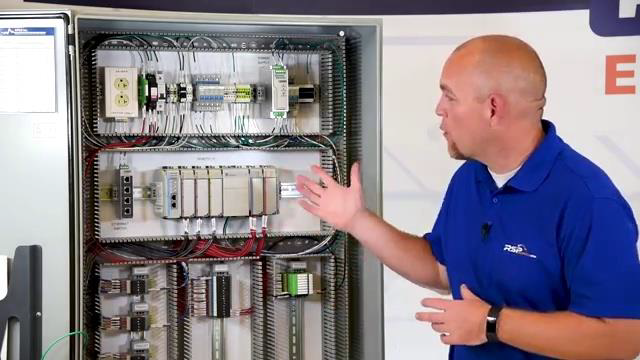
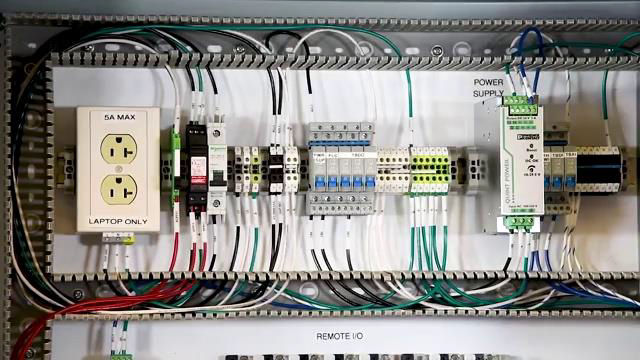
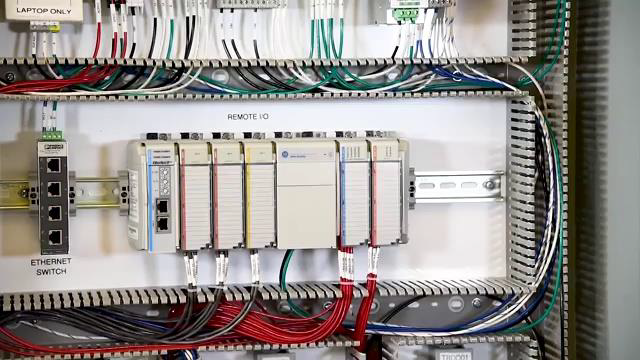
[2m:31s] We also want to take this into consideration when we're wiring our homes replaces of business. If we bend our wire too sharply, we can break or damage the conductors within the insulation. When wiring an industrial control panel in the field, it is also best practice to leave some coiled wire at the bottom of our enclosure before we make our electrical run in the industrial control panel. Again, this can save us a lot of time down the road if we ever need to service our panel or any electrical equipment in the field.
[2m:57s] The next thing we want to consider when wiring is the actual wire connection or termination point.
[3m:3s] We want to make sure that we connect or torque the wire properly. If we don't apply enough torque to the electrical connection, the wire can become loose over time or we may not have a good electrical connection. Too much torque can damage the terminal block in the industrial control panel or any electrical equipment. It can also damage, the wire itself. It is important when we're making electrical terminations, specifically in a terminal block, that we don't allow any bird caging or fraying at the end of our wire when we make the termination. Let me demonstrate.
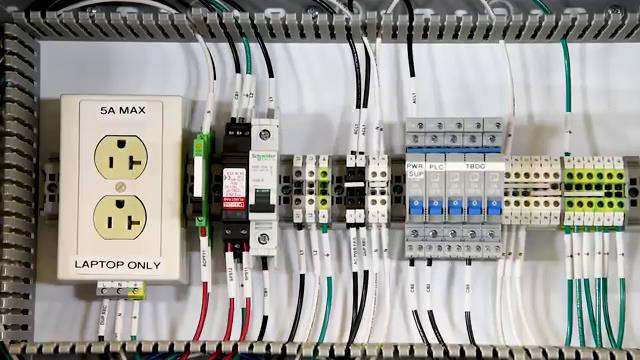
[3m:35s] In this wire, you can see it is frayed. Where you're going to make the actual connection point. When I try to insert this wire into the terminal block there are some strands of the wire that aren’t inserted properly. This can cause a short circuit in our electrical system.
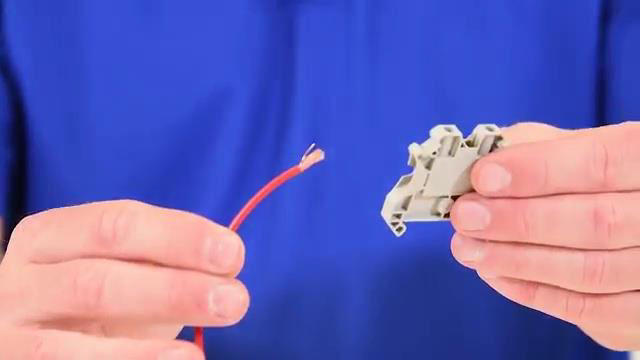

[3m:49s] The proper way to make this connection, especially with stranded wire, is to take the wire where we plan on making the termination and twist that wire. We then insert it into our terminal block. This will eliminate the possibility of any short circuits in our system due to loose wire strands.
[4m:6s] One of the last things to consider when wiring is to label. Labeling is essential when doing any kind of electrical wiring. Proper labeling will allow others to easily identify the function of a wire, and where it's going, and where it's been.
[4m:19s] It can also make troubleshooting on a panel or any electrical device much easier when someone is working on that panel at a later date.
[4m:27s] By following some of these simple steps you'll be able to get consistent, clean wiring in any type of electrical application you might encounter.
[4m:34s] For a full line of wire or wiring accessories along with thousands of other products, please go to our website. For more information or other educational videos, go to RSPSupply.com, the Internet's top source for industrial hardware. Also, don't forget: like and subscribe.



